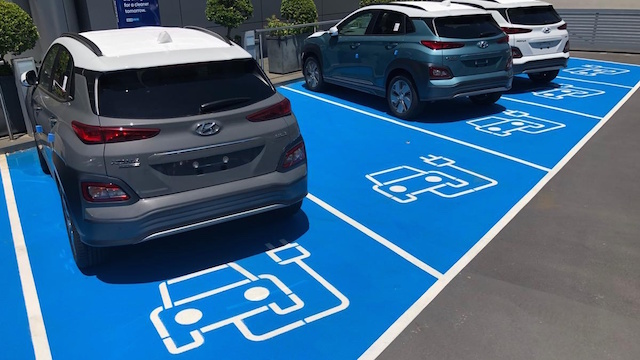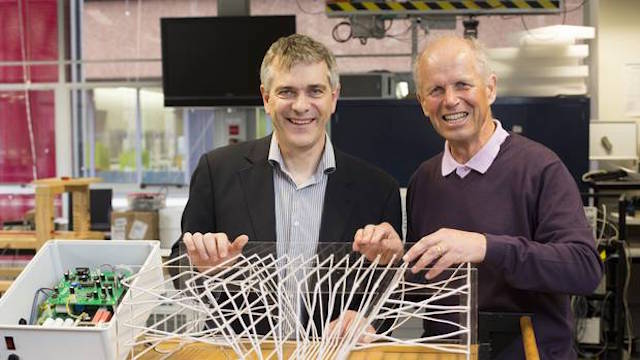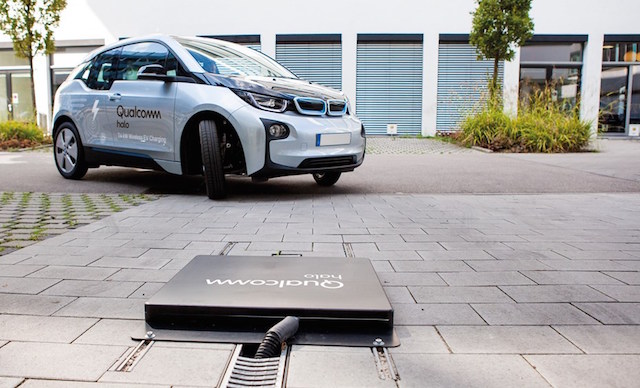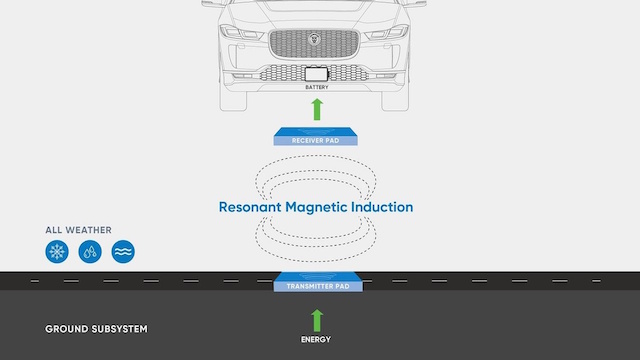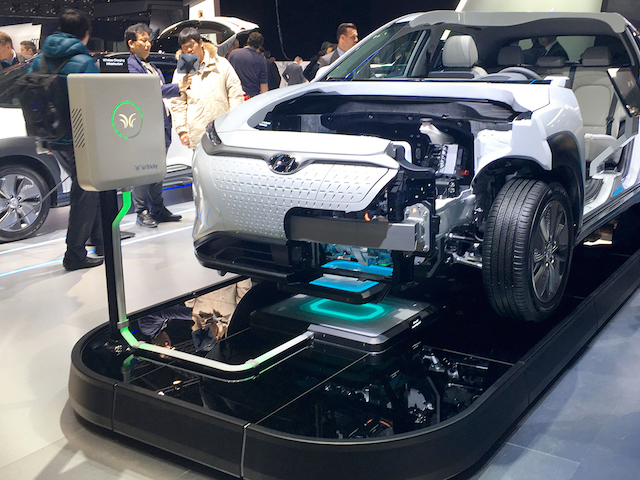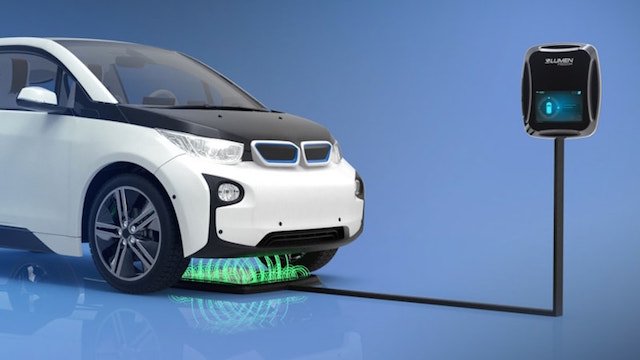
Wireless charging technology pioneered by University of Auckland professors John Boys and Grant Covic has helped an Australian company log a world first for electric cars (EVs), one it claims will change the recharging industry forever.
Lumen Freedom, an automotive components specialist based in Melbourne, has become the first and only company in the world to have a wireless charging system certified for public use on EVs.
Its flagship product is a single-box 11kW unit, the only one of its kind. It was recently approved for compliance by Underwriter’s Laboratory (UL), the global industry body which approves wireless charging technology for use in the public space.
The development means electric cars of the future will be able to recharge while parked over an electromagnetic mat, rather than plugged into a power source. The system uses magnetic fields instead of cables to recharge the car and requires little downtime to boost battery packs. (I wrote in the NZ Herald in September 2009 about electromagnetic mats as a future charging source for EVs).
Wireless charging requires several key components – a power source for wireless power transfer, the ground assembly (like an induction pad or similar) and the corresponding mated vehicle component. Lumen Freedom has developed all three.
It has been working with global partners for the past four years making the key components. One of its partners is US wireless communications specialist Qualcomm Halo, which, in a multi-million dollar deal early last decade, acquired rights to the Inductive Power Transfer (IPT) technology developed by (pictured below) Prof. Boys (right) and Covic (left). The invention won the NZ Prime Minister’s Science prize in 2013.
Rod Wilson, general manager of Lumen Freedom, told the Melbourne Age newspaper how they came across the Auckland University’s wireless charging technology in 2015, and in 2016 entered into a licence agreement with Qualcomm Halo to further develop it.
“We received an early reference design for a two-box system and we have since developed the only single-box 11kW system in the world. Qualcomm later sold the patents to WiTricity (the ‘go-to’ provider of EV wireless charging tech in the US) in Boston, which also has single-coil technology developed out of the US, so Lumen Freedom is now a licensee of WiTricity.
“We design and manufacture the wall box, the ground assembly, the vehicle pad and all the electronic integration,” Wilson said. “It’s leading the world, but we’ve been under the radar, locked away by strict non-disclosure agreements and with a blanket of secrecy over us for the last four years and it’s only in the last couple of months we’ve been able to let the world know.”
Unlike wired charging, which involves a number of different plug types and providers, wireless charging has been standardised globally according to SAE requirements, with Lumen Freedom working with major manufacturers to ensure both its single-coil and twin-coil technologies are inter-operable.
While Lumen’s 11kW system is capable of charging a 60kW battery in around five hours, eventually, said Wilson, wireless technology will be available for 50kW rapid charging outlets and even capable of wireless vehicle-to-grid power exchange.
Additionally, static charging – where you park your car on a stationary pad to charge – will soon be joined by semi-dynamic and dynamic charging, which will see vehicles charged as they move along taxi routes or freeways.
“Soon, you’ll drive home, park your car, press a button and it will charge, or run your home’s power, without a cord. Once we get a wider spread of this charging, it will take away range anxiety. We call it snack charging – you’ll top it up while stopped at the traffic lights or parked at the supermarket,” Wilson said.
Norway capital city Oslo recently announcing the rollout of the world’s first high-powered induction-charging bays (illustrated above) for taxis – featuring the Jaguar I-Pace, one of the only cars currently equipped to accept wireless charge.
Wilson estimates Australia is still five to 10 years away from seeing wireless charging implemented on its roads, but he believes the the revolution is inevitable.
“When we speak to councils and governments overseas, they’ve indicated that they don’t like plug-in electric car charging. It’s ugly and maintenance-hungry, it takes away dedicated parking space, it’s not practical for on-street parking because of the cord, you have to carry extension cables, they don’t suit people with disabilities and they attract graffiti, or vandals who cut the cord and sell the copper,” he said.
“[Wireless charging] is coming so quickly – the development and uptake is ballistic. There will still be a place for plug-in charging – for trucks and buses along major highways – but wireless will take over.”
Above: A Hyundai Kona recharges with WiTricity’s wireless system at the 2018 Geneva motor show.

